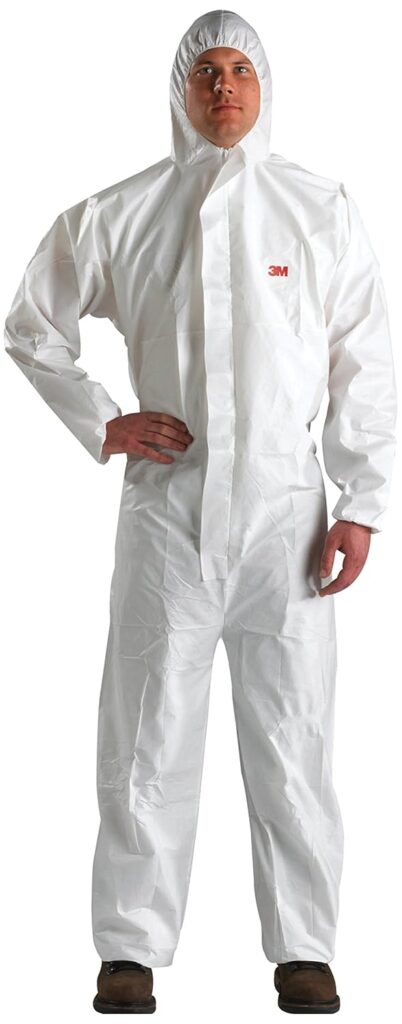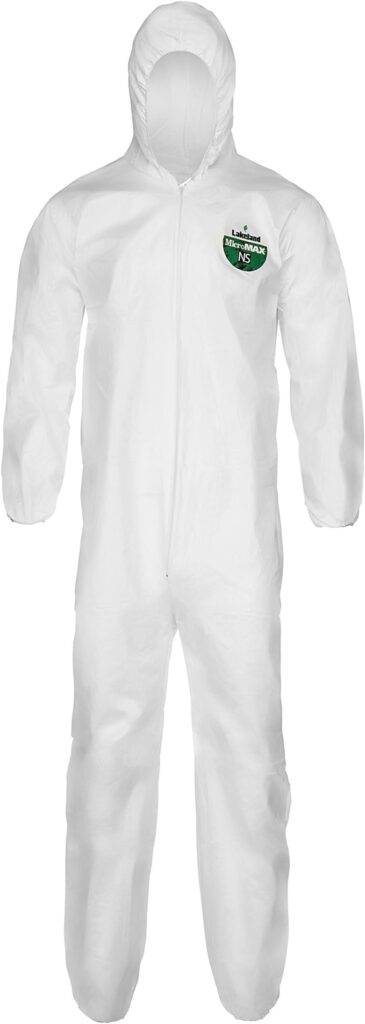
Hazmat suits, short for hazardous materials suits, are specialized garments designed to protect individuals from exposure to dangerous substances. They play a crucial role in various industries where workers may come into contact with hazardous materials that pose risks to their health and safety.
In this article, we will explore the significance of hazmat suits, their types, components, proper usage, and maintenance, as well as their role in different sectors and their relevance during the COVID-19 pandemic.
Understanding Hazmat Suit Materials
The selection of materials for hazmat suits is paramount in ensuring protection against hazardous substances. These suits are meticulously crafted to safeguard individuals from a spectrum of threats, including chemicals, biological agents, and other perilous materials. Therefore, the choice of material holds utmost importance in the construction of these suits.
One prevalent material used in hazmat suits is Tychem. This fabric comprises multiple layers of barrier film laminated together, providing exceptional chemical resistance and durability.
Tychem is renowned for its ability to shield against a wide array of chemicals and contaminants, making it a preferred choice for hazmat suits.
Another widely favored material is Saranex. Offering superior chemical resistance and permeation protection, Saranex stands out for its lightweight and flexible nature. It is often selected for scenarios involving exposure to liquid splash hazards or low levels of vapors, owing to its robust protective properties.
For instances requiring high-level protection against toxic substances, ChemMax 4 Plus fabric is a viable option. This laminate material boasts exceptional resistance to harmful chemicals, along with notable attributes such as abrasion and puncture resistance, ensuring comprehensive protection in hazardous environments.
In addition to the aforementioned materials, a diverse range of options exists in the market, each catering to distinct needs and requirements by offering varying levels of protection.
Types of Hazmat Suits
There are four main levels of hazmat suits, each offering different levels of protection based on the hazards present:
Level A
Level A suits provide the highest level of protection and are used in situations where the highest level of respiratory, skin, and eye protection is required. They are fully encapsulating and include a self-contained breathing apparatus (SCBA) for respiratory protection.
Level B
Level B suits offer similar levels of respiratory protection as Level A suits but may have less skin and eye protection. They are typically used when the presence of hazardous vapors or gases necessitates the use of SCBA but the skin does not need to be fully encapsulated.
Level C
Level C suits provide respiratory protection but may not offer full skin protection. They are often worn with a separate air-purifying respirator (APR) and are suitable for situations where the hazard is known and the concentration is below permissible exposure limits.
Level D
Level D suits, also known as work uniforms, offer minimal protection and are used in situations where there are no known hazards or where the risk of exposure is minimal.
Key Considerations When Purchasing a Hazmat Suit
When it comes to investing in a hazmat suit, several crucial features warrant careful consideration to ensure optimal protection in hazardous environments.
Material Selection: The material of the suit is paramount, with options like Tyvek, PVC, and rubberized fabric available. Each material boasts varying levels of chemical resistance and durability, necessitating a choice that aligns with your intended use and potential exposure risks.
Level of Protection: Hazmat suits are categorized into different levels based on their capacity to safeguard against diverse hazards. Prioritize assessing your exposure risks to select a suit that meets or exceeds these requirements, ensuring comprehensive protection.
Design and Construction: Evaluate the suit’s design and construction, focusing on reinforced seams, integrated gloves and boots, sealed zippers or closures, and adjustable closures at wrists and ankles. These features contribute to a secure fit and enhanced protection in hazardous conditions.
Comfort: Comfort is integral during prolonged wear in hazardous situations. Opt for suits crafted from breathable fabrics or featuring ventilation systems to mitigate overheating, ensuring comfort without compromising safety.
Sizing Options: Proper fit is non-negotiable for maximum effectiveness and comfort. Explore sizing options to secure a hazmat suit that offers an ideal fit, facilitating unrestricted movement and optimal protection.
By meticulously considering these essential features before purchasing a hazmat suit, you can make an informed decision that prioritizes safety, comfort, and functionality in hazardous environments.
Safety Standards and Regulations for Hazmat Suits
When dealing with hazardous materials, prioritizing safety is paramount. This emphasis on safety is reflected in the stringent safety standards and regulations governing hazmat suits.
These regulations are designed to ensure that hazmat suits offer sufficient protection for individuals working with or in proximity to hazardous substances.
An essential standard to consider when procuring a hazmat suit is the National Fire Protection Association (NFPA) 1991 standard. This standard delineates requirements for vapor-protective ensembles utilized by emergency response personnel during incidents involving hazardous materials.
Another pivotal regulation to take into account is provided by the Occupational Safety and Health Administration (OSHA). OSHA mandates that employers evaluate workplace hazards and furnish suitable personal protective equipment, including hazmat suits, to employees potentially exposed to hazardous substances.
Furthermore, it is imperative to ascertain whether the suit adheres to specific international standards, such as those stipulated by the International Organization for Standardization (ISO). The ISO furnishes guidelines encompassing testing methods, performance prerequisites, and labeling criteria for protective clothing against chemical substances.
In addition to adhering to these standards and regulations, it is imperative for suit users to undergo comprehensive training on their correct utilization. Training should encompass procedures for donning and doffing, inspection protocols, decontamination processes, and proper disposal methods.
By steadfastly adhering to these safety standards and regulations while ensuring the correct utilization of hazmat suits, the risks associated with handling hazardous materials can be effectively minimized. Always remember: safety comes first!
Leading Hazmat Suit Brands
Selecting the right suit is paramount for ensuring maximum protection in hazardous environments, and the choice of brand plays a significant role in this decision-making process. With a plethora of brands available in the market, navigating through them can be daunting.
To assist you in making a well-informed choice, here are some top-tier suit brands recognized for their quality and dependability.
DuPont: A stalwart in the realm of personal protective equipment, DuPont has maintained a leadership position for decades.
Their Tychem suits are renowned for offering exceptional chemical resistance and durability, making them a preferred option among professionals working with hazardous materials.
3M: Distinguished for their innovation and cutting-edge technology, 3M offers a diverse array of suits designed to provide dependable protection against a spectrum of chemicals and contaminants.
Prioritizing both safety and comfort, their suits are engineered to deliver optimal performance without compromising on wearer comfort.
Lakeland Industries: Specializing in the manufacturing of protective clothing, Lakeland Industries is committed to user safety.
Their extensive range of suits is meticulously crafted to meet industry standards, ensuring reliability and peace of mind for wearers.
Alpha Pro Tech: Another esteemed brand in the realm of hazmat suits, Alpha Pro Tech produces reliable suits suitable for a myriad of applications, ranging from industrial cleaning to medical emergencies and disaster response scenarios. Their commitment to quality and performance makes them a trusted choice among professionals.
When selecting a brand, it is imperative to consider your specific needs and requirements, along with any pertinent safety regulations or standards applicable to your industry or profession. By prioritizing quality and reliability, you can confidently choose a hazmat suit that offers optimal protection in hazardous environments.
Conclusion
Hazmat suits stand as indispensable protective gear for individuals operating in hazardous environments. Engineered to act as a formidable barrier against harmful substances, these suits serve to shield wearers from potential dangers. Acquiring a comprehensive understanding of the diverse types of suits, their constituent materials, distinctive features, and adherence to safety standards proves imperative in the selection process.
When embarking on the journey to procure a suitable hazmat suit, it becomes pivotal to factor in various considerations. These may include the requisite level of protection, considerations of comfort, mobility, durability, and ease of use. Additionally, strict adherence to proper usage protocols and routine maintenance practices is paramount to uphold the suit’s effectiveness over time.
It remains essential to ensure that the selected suit aligns with safety standards and regulations established by organizations such as OSHA or NFPA, thus ensuring the assurance of maximum protection. Opting for reputable brands renowned for their commitment to quality and adherence to these rigorous standards further enhances the assurance of safety and reliability.
Should further inquiries or clarifications regarding hazmat suits arise, do not hesitate to reach out for additional information. Above all, prioritize safety and vigilance in hazardous environments. Stay safe out there!
FAQs
How do hazmat suits protect against hazardous materials?
Hazmat suits create a barrier between the wearer and hazardous materials, preventing them from coming into contact with the skin, eyes, or respiratory system.
What industries use hazmat suits?
Hazmat suits are used in various industries, including healthcare, chemical manufacturing, emergency response, and hazardous waste cleanup.
How often should hazmat suits be inspected and tested?
Hazmat suits should be inspected before each use and tested regularly to ensure that they maintain their integrity and provide adequate protection.
What should I do if my hazmat suit is damaged or compromised?
If a hazmat suit is damaged or compromised, it should be removed immediately, and the wearer should follow decontamination procedures to minimize the risk of exposure.
Are hazmat suits reusable?
Some hazmat suits are reusable, while others are designed for single-use only. It is essential to follow manufacturer guidelines for cleaning, decontamination, and disposal to ensure proper safety protocols are followed.










